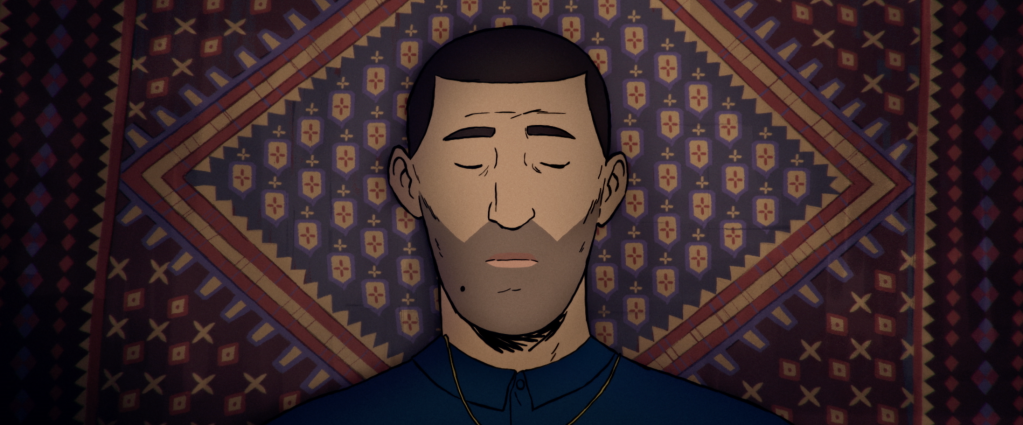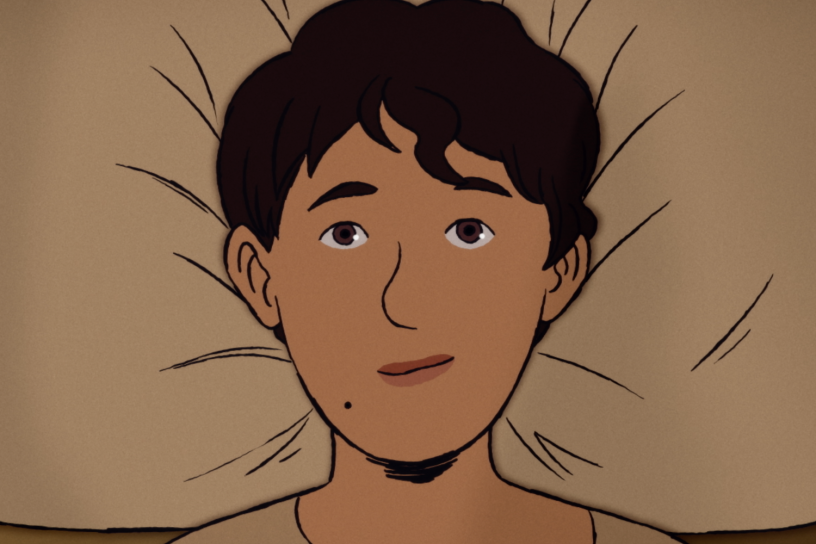When Danish filmmaker Jonas Poher Rasmussen set out to make animated documentary Flee, the story of an old school friend Amin Nawabi, he envisioned it as a small project – perhaps a 20-30 minute short.
However, as soon as Amin (a pseudonym) started to tell his story – of leaving Afghanistan as a young refugee in the late ’80s and then making a long and arduous journey to Western Europe – it became clear that the film needed a longer format.
As the project grew in scale, it was still unimaginable to the filmmaker and his subject that it might end up where it is today.
In addition to winning more than 65 awards, including the Sundance Grand Jury Prize for World Cinema Documentary, Flee recently made history as the first film to ever be nominated simultaneously for the Oscar for Best Feature Documentary, Best International Feature Film, and Best Animated Feature.
“It feels totally surreal,” Rasmussen tells IF of the nominations over Zoom.
“This film really started out as a conversation between two friends.”
The director will explain the process of making Flee at the Australian International Documentary Conference (AIDC) this Sunday, and in particular, the art of using animation in non-fiction storytelling.
Rasmussen first approached Amin to tell his story more than 15 years ago, initially as a radio documentary. At the time, Amin didn’t feel ready to speak publicly, but knew that he would at one point, and that he would do so with Rasmussen.
Keeping the idea in the back of his head, the director then participated in a Danish animated documentary workshop, AniDox. He realised the format could be the perfect way for Amin to tell his story on his own terms.
“He was very intrigued by the fact you could be anonymous behind animation,” Rasmussen says.
“What you hear in the film, or what you see, is the very first time he talks about these events he went through. It’s really not easy for him to talk about.
“The fact he didn’t have to be in the public eye, and could keep control over what he wanted to talk about… was really what enabled him to start opening up about his story.”
Rasmussen’s film work prior to Flee includes TV documentary Something About Halfda, hybrid doco Searching for Bill and feature doc What He Did. As both a filmmaker and radio documentarian, he has always been curious about playing with the format.
That said, animating a non-fiction story would prove an entirely different process and a “steep learning curve”. For one, the interviews needed to be done and the story edited before the ‘shoot’ could begin.
“Animation is so expensive; you can’t animate 40 hours of raw material and then start editing. You need to edit first, and close your edits with rough storyboards.”

To get Amin’s story, Rasmussen interviewed him over a number of years, using a technique he learned in his radio days: he asked him to lie on his back and close his eyes.
“When you deal with a story that takes place in the past, there’s always a concern of: how do you make it present again and how do you create a presence? This technique really helps with that.
“Every time we would start talking about a certain memory, I always would start out with asking him to describe the location we’re in and to do it in detail.
“For example, in the beginning of the film, he’s in his childhood home in the garden, and his siblings are there. Then I would ask him, “Okay, but what plants are there in the garden? What do you see? What does the house look like? What’s outside the walls? What do you smell?’
“It was material to put into the animation, but it would also bring him back to a specific memory and he would start to remember things he would have otherwise forgotten. It’s really a way of creating a presence in his way of talking; he relives things instead of just retelling them.”
Finding the right animation style to match Amin’s story was a process that took time, with Rasmussen working with the Copenhagen-based Sun Creature Studio and and animation producer Charlotte De La Gournerie. Some initial images proved too ‘cartoony’ – smooth in style and the characters had big eyes – and it became too detached from his testimony.
The team then turned to archival footage and as well as other references from live-action films, photographers, painters and visual artists to bring the film back to a place where it felt authentic.

“We used archival footage a lot as references for the animation; we would take things directly… like props and buildings,” Rasmussen says.
While Flee offers insight into Amin’s life now, as an academic living with his partner Kasper in Copenhagen, much of the film is about the past. In this way, animation proves a vital tool to bring to life Amin’s story in a way that would otherwise have been impossible, except in perhaps dramatic reenactments.
When he goes through traumatic moments, the animation style changes – it gets blurrier around the edges and more abstract, reflecting the emotion of the moment.
“For some reason, it feels like the animation really helps this feeling of authenticity; that we could support this testimony that Amin gives me with the animation,” Rasmussen says.
To ground the audience further in the context of the story, Flee is also interspersed with real news clips and other archive.
“It was so important to me from the very beginning to remind people that this is a documentary story, and underneath the animation you have a real person, and a real voice. You should, if you scratch away the animation, find there is a real person underneath,” Rasmussen says.
“Also [I used archival footage] to show that he reason why he is forced on this flight is because of historical events that happen in the world we all belong to.”
Animation also offered Rasmussen other distinct advantages. In a normal documentary, if you were to miss certain shots in the field, then it’s often too bad. Animation, however, means you can always get the shot and tell the sequence how you want.
“If you need that close up shot, you just ask [the artists] to do it,” Rasmussen says.
“There’s a precision in storytelling that you can have in an animation that you can’t have in the same in normal documentary, which is amazing.”
Using animation laso transformed the often solitary pursuit of documentary filmmaking into a large-scale effort.
“I was lucky to work with some amazing artists; they just brought so many great ideas to the table. I’ve been used to working on my own a lot – sometimes I have a DOP or I have an editor – but a lot of the time I’m on my own. To have that shared experience of being creative was really amazing.”
With Flee having received the recognition that it has, Rasmussen says Amin is “overwhelmed, but in a good way”.
“He’s really happy that people relate to his story. When we started the project, he told me that growing he never really had any stories he could see or read where he felt he could relate to it. So the fact that now his story is out, for the millions and millions of people who have similar backgrounds, have similar experiences there’s a nuanced story out there and they can hopefully relate to it and see that they’re not alone.”
Flee is in cinemas now via Madman Entertainment. Jonas Poher Rasmussen will open AIDC Sunday March 6 at 11:00am in a session titled ‘The Art of Non-Fiction’.


